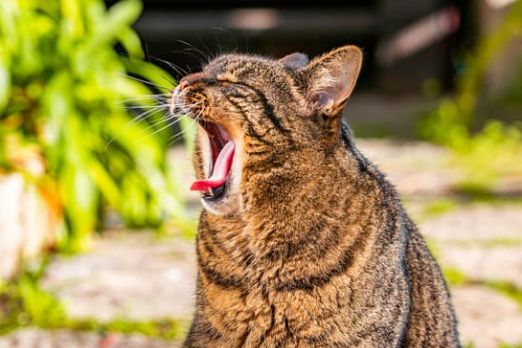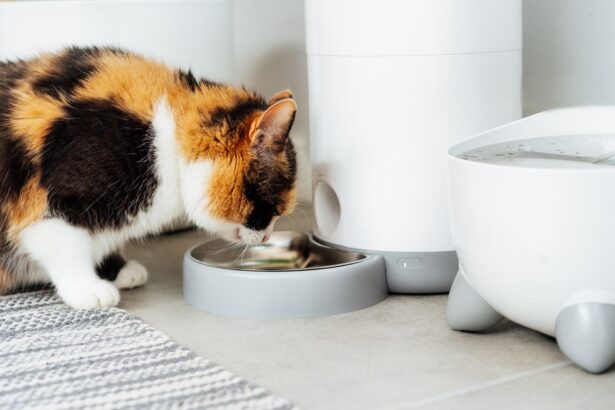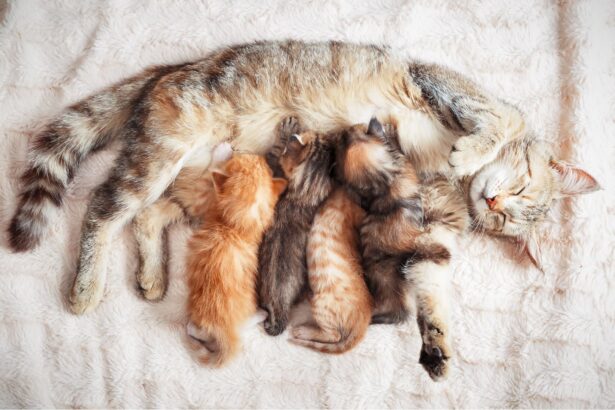Your cat has a lot to say… and she says it with meows. Sometimes it’s a whispery chirp, sometimes a bold “feed me now” announcement. Ready to decode the soundtrack of her day and respond like the pro cat mom you are?
Why cats save their meows for us
Cats talk to each other with scent, posture, and subtle trills; full-on meowing is mostly for humans. That’s right: they fine-tuned this vocal tool just for their favorite people.
A meow never stands alone. The clue is always sound + context: time of day, body posture, tail shape, ears, eyes. When you read the whole scene, you’ll hear the message loud and clear. Want a deeper dive? Try this complete guide to your cat’s meows.
Attention meows
Short, high, repeated mews usually mean “Hey, look at me!” Translation: empty bowl, closed door, playtime request, cuddle please. If she’s meowing right by her dish, you already know the script.
What to do? Respond, but reward calm. Offer food, play, or affection when she’s quiet for a beat. That one-second pause teaches her that serenity gets results.
Mood meows
A pressy, higher-pitched meow can signal frustration. A soft “mrrr” with relaxed eyes is more like “I’m happy to see you.” Watch the tail: swishing fast = tension; gentle wave = chill.
Quick ear/voice memo: ears back + tight meow = stress. Ears forward + soft meow = friendly social time. Curious about tail talk? Peek at this tail language decode.

Excitement meows
Right before play or when bird-watching, expect a longer meow and sometimes rapid teeth chatter. That’s the hunting program loading. Nothing to worry about; it’s her inner “On your marks!”
Great outlets: feather wands, fishing-rod toys, boxes and tunnels, DIY obstacle courses. A few minutes of focused play can dial down later “I’m bored” meows.
Night concerts at 3 a.m.? You’re not alone. Here’s why cats meow at night and how to reclaim your sleep.
Alarm meows
Lower, louder, sometimes almost a yell—these flag fear, discomfort, or a perceived intruder. Think: unfamiliar visitor, strange animal scent, sudden noise.
Your winning response: soothe without fuss. Speak softly, provide a safe high perch or a hideout, and redirect with a low-arousal toy. Message delivered: “I’ve got you. You’re safe.”
Pain or illness meows
New, plaintive meows or a sudden change in voice are red flags. A dramatic shout in the litter box may point to urinary pain. Other warning signs: poor appetite, hiding, sudden messes, rapid breathing.
- When to call the vet: whenever a new abnormal meow persists, especially with physical changes.
- Spay/neuter note: intact cats often vocalize more during heat; neutering typically reduces those calls.
For broader context on vocal cues and behaviors, keep this guide on why cats purr close—purring plus meowing tells a fuller story.
Practical tip you’ll love
Create a one-week “Meow Diary.” Note time, meow type (short/high/long/low), context, and what solved it. Patterns pop fast: 7:30 = breakfast ping; 18:00 = play request; 21:30 = cuddle o’clock.
Bonus trick: pick a cue phrase like “I hear you” + a gentle hand sign. Say it, pause, then reward the first calm second. You’re teaching a polite “ask,” which lowers the need for constant meowing over time.
Common mistake to avoid
Scolding or ignoring every meow. A meow is a signal, not a tantrum by default. Punishment raises stress, which ironically fuels more noise.
Better plan: identify the need, respond consistently, and set daily rhythms—play, then food, then quiet. Predictability is kitty’s best friend.
Fun fact
Kittens meow a lot to their moms, but adult cats rarely meow to each other. They mostly perfected meowing… for us. Yes, you’re the audience of honor, and they even tweak pitch and rhythm to be better understood.

How to soothe an extra-chatty cat
- Keep the basics perfect: clean bowl, fresh water, pristine litter.
- Schedule two 5–10 minute play sessions daily, then feed a small snack to “close the hunt.”
- Add perches and cozy hideouts to reduce anxiety and boost control of the territory.
- Use slow blinks and a soft voice to de-escalate.
Want even more body-language cues to pair with meows? Here’s a gentle refresher on tail talk and mood so your replies hit the mark.
FAQ
Why does my cat change meows throughout the day?
Each meow serves a purpose—attention, need, stress, excitement. Read the body language and context to decode the meaning.
Are low, deep meows always about fear?
Not always, but they often reflect strong emotion. If they recur, identify the trigger and make the space feel safer.
How do I reduce night-time meowing?
Play in the evening, feed after play, enrich the environment, and keep a firm routine. Block windows if early birds overstimulate her.
When should meowing worry me?
Any sudden change, persistent plaintive sounds, or meows paired with other symptoms (pain, litter issues, lethargy). When in doubt, call your vet.







